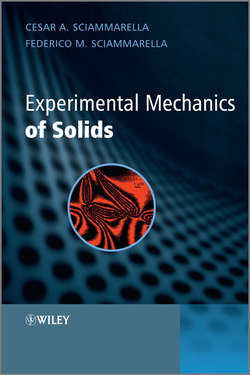Описание книги
Experimental solid mechanics is the study of materials to determine their physical properties. This study might include performing a stress analysis or measuring the extent of displacement, shape, strain and stress which a material suffers under controlled conditions. In the last few years there have been remarkable developments in experimental techniques that measure shape, displacement and strains and these sorts of experiments are increasingly conducted using computational techniques. Experimental Mechanics of Solids is a comprehensive introduction to the topics, technologies and methods of experimental mechanics of solids. It begins by establishing the fundamentals of continuum mechanics, explaining key areas such as the equations used, stresses and strains, and two and three dimensional problems. Having laid down the foundations of the topic, the book then moves on to look at specific techniques and technologies with emphasis on the most recent developments such as optics and image processing. Most of the current computational methods, as well as practical ones, are included to ensure that the book provides information essential to the reader in practical or research applications. Key features: Presents widely used and accepted methodologies that are based on research and development work of the lead author Systematically works through the topics and theories of experimental mechanics including detailed treatments of the Moire, Speckle and holographic optical methods Includes illustrations and diagrams to illuminate the topic clearly for the reader Provides a comprehensive introduction to the topic, and also acts as a quick reference guide This comprehensive book forms an invaluable resource for graduate students and is also a point of reference for researchers and practitioners in structural and materials engineering.
